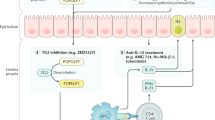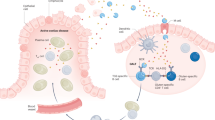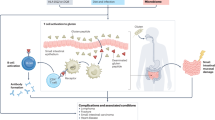Abstract
SENSITIVITY to wheat or rye gluten is the essential mechanism in the pathogenesis of cœliac disease and idiopathic steatorrhœa. Such patients improve on a gluten-free diet and deteriorate on the re-introduction of gluten itself or its autoclaved and filtered peptic/tryptic digest into the diet1. In these diseases a disturbance of small intestinal function is a major factor2.
This is a preview of subscription content, access via your institution
Access options
Subscribe to this journal
Receive 51 print issues and online access
$199.00 per year
only $3.90 per issue
Buy this article
- Purchase on SpringerLink
- Instant access to full article PDF
Prices may be subject to local taxes which are calculated during checkout
Similar content being viewed by others
References
Frazer, A. C., Fletcher, R. F., Ross, Constance, A. C., Shaw, B., Sammons, H. G., and Schneider, R., Lancet, ii, 252 (1959).
Anderson, C. M., Frazer, A. C., French, J. M., Gerrard, J. W., Sammons, H. G., and Smellie, J. M., Lancet, i, 836 (1952).
Bülbring, E., Crema, A., and Saxby, O. B., Brit. J. Pharmacol., 13, 440 (1958).
Paton, W. D. M., Brit. J. Pharmacol., 12, 119 (1957).
Feldberg, W., and Lin, R. C. Y., J. Physiol., 111, 96 (1950).
Author information
Authors and Affiliations
Rights and permissions
About this article
Cite this article
SCHNEIDER, R., BISHOP, H., SHAW, B. et al. Effect of Wheat Gluten on the Peristaltic Reflex. Nature 187, 516 (1960). https://doi.org/10.1038/187516a0
Issue date:
DOI: https://doi.org/10.1038/187516a0
This article is cited by
-
�ber ein die Darmmotilit�t hemmendes Peptid aus Weizenprotein
Die Naturwissenschaften (1964)



